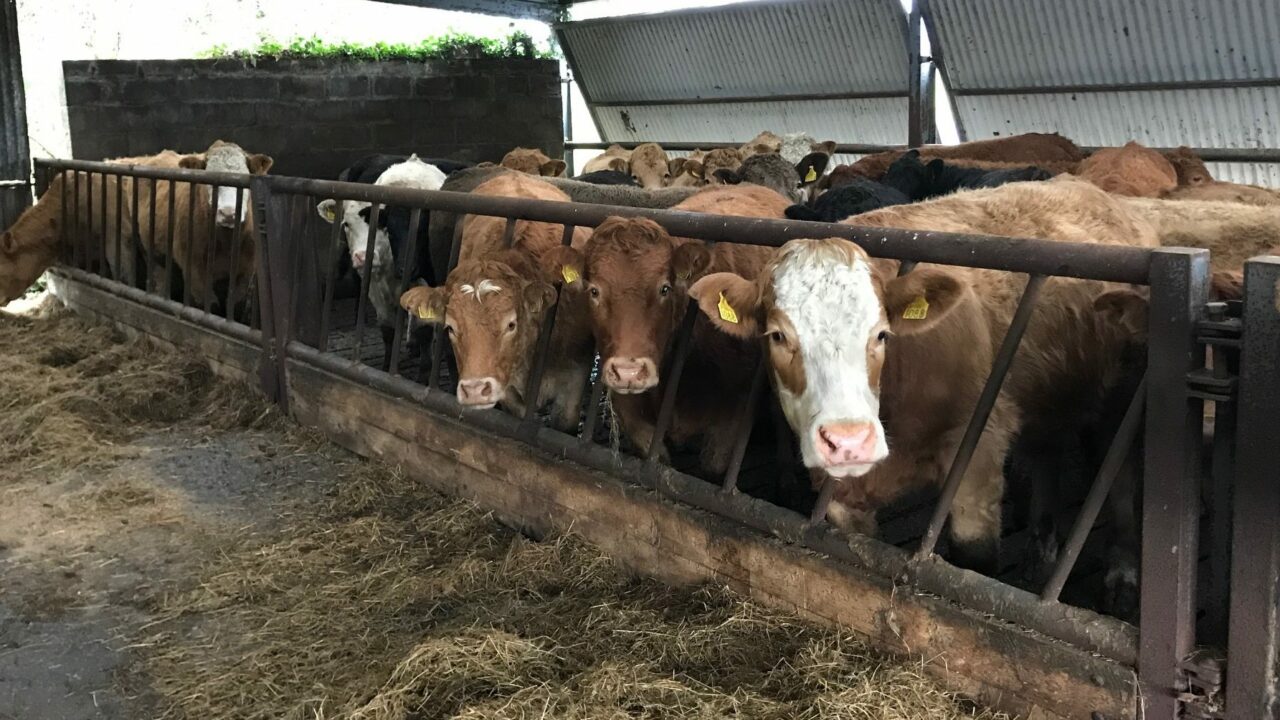Although the outlook for winter finishing remains challenging, attention is slowly beginning to turn to housing cattle for feeding in advance of slaughter.
Coleman Purcell, nutrition advisor with Dairygold, touched on some of the key considerations when choosing a beef finishing concentrate at a recent beef expo.
“We can pretty much break all feeds down into dry matter and water. We won’t speak about water. Normally, we have too much of it anyway in this country, so we don’t need to buy it in the feed.
If we look at the dry matter portion, we are concerned principally about carbohydrate, protein and fat.
Touching on net energy, Purcell said: “The net energy system has been in use in this country for the last number of years and rightly so because it has been a huge improvement from its predecessor – the metabolisable energy system.
“The net energy of the feed is the amount of energy the animal can actually use. The old system spoke about metabolisable energy, which included energy which wasn’t available to the animal.”
Net energy is measured in UFL, he said, and one UFL is the equivalent to the energy in one kilogram of air-dried barley.
Using the UFL system, Purcell said: “We can categorise the raw materials based on their net energy content and we would normally do that based on net energy because protein tends not to be usually deficient in beef diets; whereas net energy is pretty much always deficient.”
The Dairygold representative categorised key feed ingredients in order of UFL values.
“Category one would be your high-quality ingredients; they would have a UFL from 0.9 upwards (cereals, barley, maize). Category two (palm kernel) has a UFL that’s the middle of the road at 0.85 and category three contains the ingredients that we really don’t want to see on the label (sunflower and pollard).”
Continuing, Purcell said: “If you are fattening continental cattle, you are really looking at a total diet energy density – on a dry matter basis – of 0.95-0.97 to achieve the necessary growth rates.
“If you had 70 DMD (dry matter digestibility) silage and fed that on its own, you’d probably achieve an energy density of about 0.77 UFL; so you are a million miles off where the target needs to be.”
With this, concentrate supplementation is needed to ensure that the diet is of a sufficient energy density.
“Continental cattle have the genetic capability to put down a lot of lean meat to grow very quickly, but unfortunately they don’t have big appetites.
You must remember, you’ve got to get a lot of nutrients into a pretty small space; there’s no room for rubbish or poor-quality ingredients if you want to achieve the desired growth rates.
Commenting on the ideal beef finishing concentrate, Purcell said: “At the absolute minimum, it should be high in energy. If you are serious about a really high-quality energy concentrate, you are probably looking at 0.95 UFL or more.
“I would say that it needs a level of protein that’s sufficient for the growth rate of the animal; but also to balance the energy ingredients inside the feed.
“I would say that – and it’s hugely important – you need a slow level of fermentation.” This is necessary, he said, to keep the animal’s rumen healthy and to prevent the rumen from becoming too acidic.
“If we feed an animal in such a way that we create a level of acidity or acidosis, we will not achieve the quoted UFL values and what might seemingly appear to be a high-quality ration will not give you the type of growth you are expecting.”
Purcell also discussed the role of yeast in beef finishing rations, adding: “To maximise the bug population in the rumen, yeast is hugely important.
Everything that happens to drive growth rate is driven by the bugs and by their work of digestion in the rumen.
“We are very keen on the use of yeasts in our high-quality feed in Dairygold and one of the big advantages of yeast is that you get a huge increase – probably in the order of 40% – in the number of bugs in the rumen.
“That has two big effects in the rumen. You get improved digestibility and improved intake.”

